Fashion Jungle: Veterans’ Club
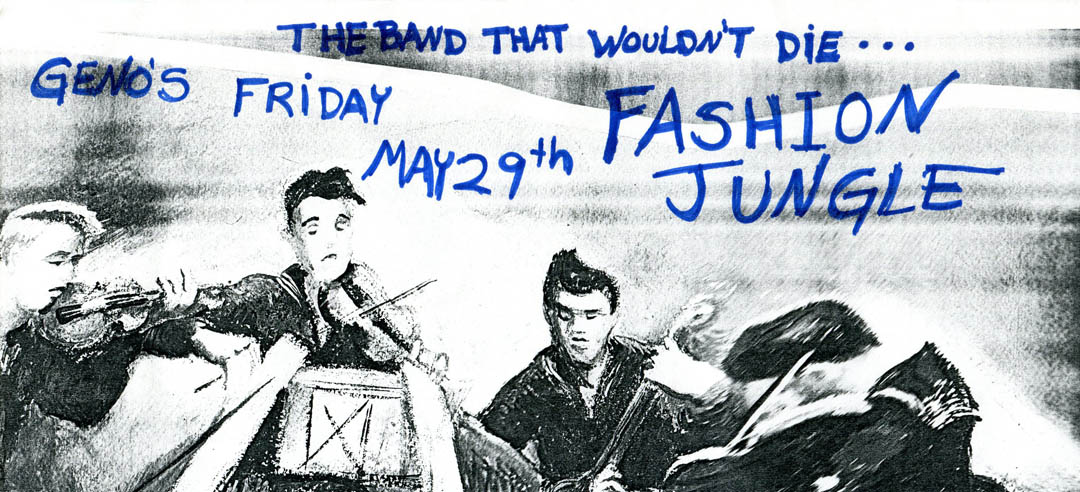
Bad, pesky words! Go directly to popular tunes!
“It’s all the more baffling that a band with so many high-quality original songs would seem to have an attitude about its future that borders on the blasé. But the Fashion Jungle three aren’t so much blasé as they are pragmatic. ‘We’re all too old to work our way up the ladder,’ Hubley says.
” ‘It isn’t that we lack ambition,’ [bassist Steve] Chapman adds. ‘We can’t get from here to there without doing things we don’t want to do.’ ”
— “Back in Style: Fashion Jungle Goes ‘Round Again” by Chris Pierson, Sweet Potato, Sept. 2‑9, 1987
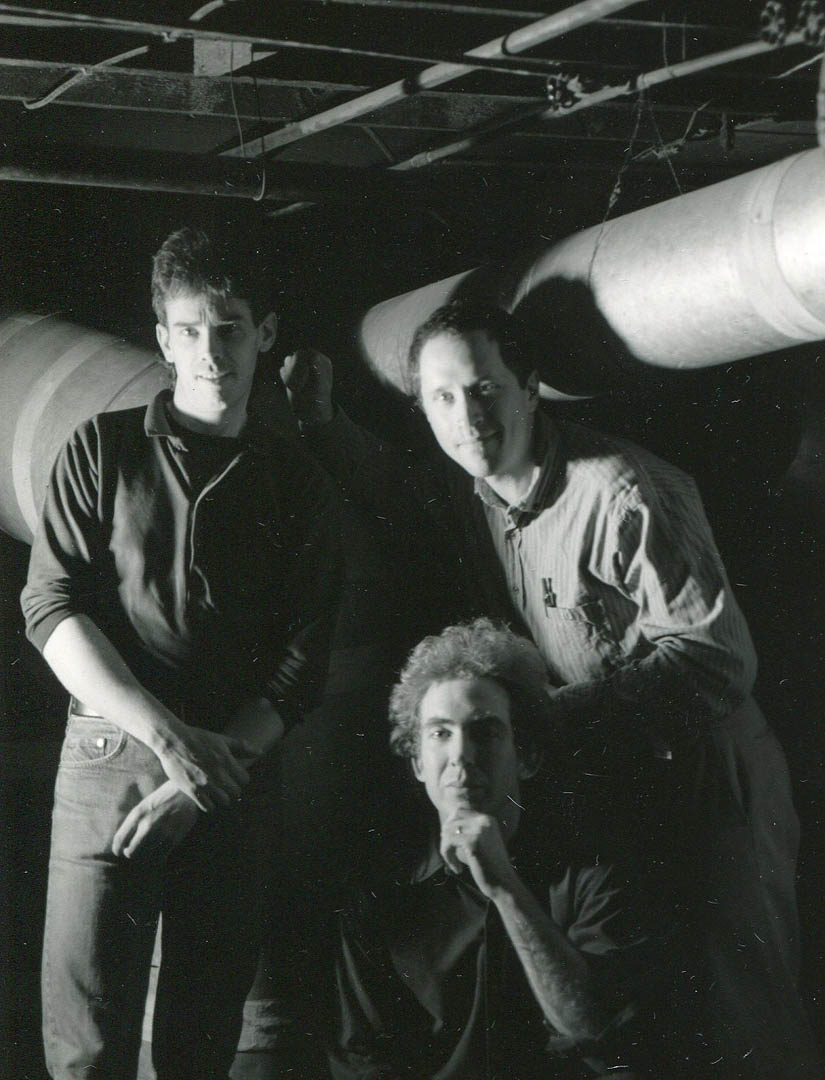
A Fashion Jungle publicity shot taken in the basement of Steve Chapman’s house by the Minolta self-timer. Clockwise from left: drummer Ken Reynolds, guitarist Doug Hubley, bassist Steve Chapman.
Steve moved back to Maine in late 1986, accompanied by his new bride, Jeri Kane Chapman.
And the next thing we knew, the Fashion Jungle was a going concern again: the same membership as the 1982 edition, Steve, Doug and drummer Ken Reynolds.
It was like we’d never left off.
The playing came back quickly despite the two-year layoff. We learned new originals — the band’s declared raison d’être — and found a few covers, such as the Beatles’ “She’s a Woman” and Woody Guthrie’s “Do Re Mi,” to which I added lyrics carping about the carpetbaggers flooding into Maine.
Gigs came easily. Not only good old Geno’s, where the reconstituted FJ made its debut on May 29, 1987, but at new venues like the Marble Bar (on York Street where Portland Pie is now; lovely acoustics) and Herb Gideon’s legendary Tree Cafe, on Danforth Street adjacent to its namesake, one of the city’s last elm trees. At Zootz, the epicenter of Portland’s hip-and-cool nightlife for a few short years, we played a benefit for a group advocating against U.S. involvement in Central America. In 1988, we returned to the Maine Festival.
Rehearsals were briefly elevated out of the basement, into the dining room of the duplex that Gretchen and I were renting at 506 Preble St., South Portland. To avoid disturbing the neighbors (who had no such scruples toward us when it came to abusing their children and holding all-night poker games), we played quietly, sans PA and with a partial drum kit. Later in the year we moved back below ground level, into an acoustically insulated rehearsal room that Steve built in the basement of his and Jeri’s house.
As I had done with “Corner Night,” I wrote a song about this phase of the Fashion Jungle. I’m not normally big on explaining my lyrics, but will make an exception in the case of “Veterans’ Club” because it’s so arcane and yet so germane to this post.
As the title tells you, the song lightly likens being in a rock band to fighting a war. I hope it’s clear that I don’t mean that too seriously, and that I’m mocking my own melodramatic tendencies. But if the FJ wasn’t the crucible of battle, it was at least a saucepan of high hopes, hard work, ecstasy and disappointment . . . well, enough of that metaphor. But the experience was intense enough to leave us all feeling bound together for years after the band’s demise.
The top of the song is riddled with the names of Fashion Jungle songs treated straight or as puns: “Entertainer,” “A Certain Hunger,” “Nothing Works,” “Nothing to Say,” “Final Words.” There were other insider references. “Box-office barricades” harked back, for example, to the Geno’s practice of making bands appoint someone to take admission at the door, duty that was no picnic at that particular venue (Gretchen, Jeff and Alden usually got stuck with it — thanks again to them!).
But in “Veterans’ Club” all the insider stuff works, more or less, to set up the real topic: Having starred in the blockbuster Fashion Jungle Story from 1981 to 1984, how did we feel about doing a sequel?
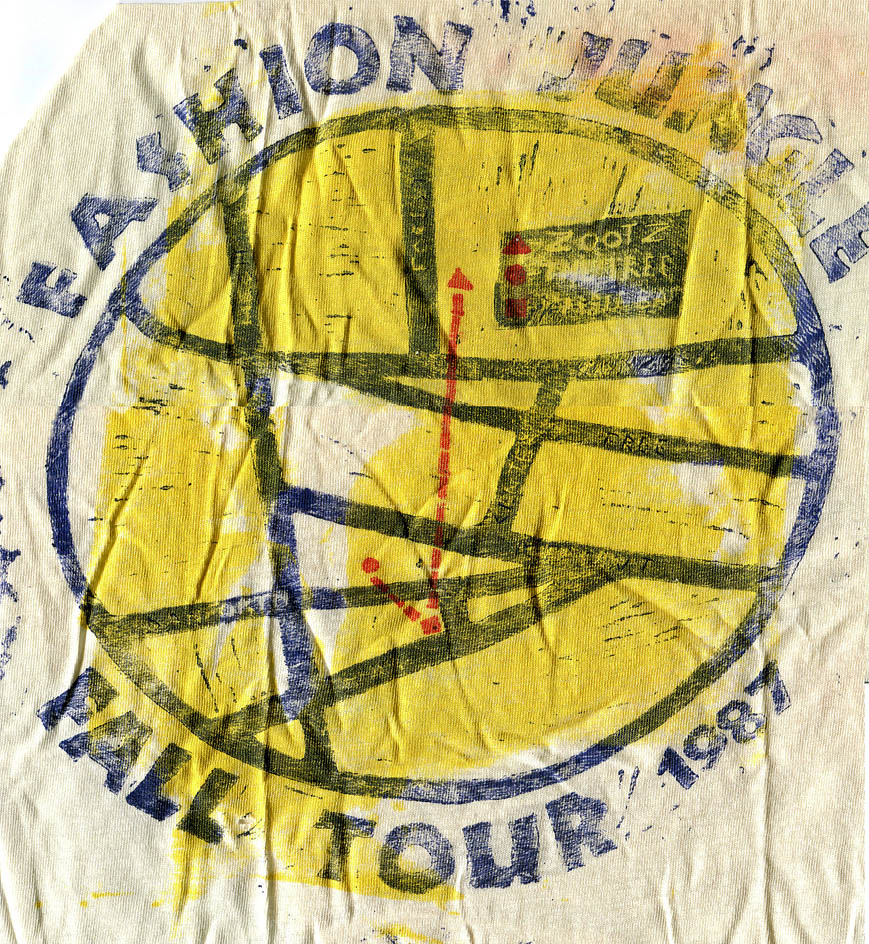
It was a big deal for us to have have three gigs in the course of a single season — hence this T-shirt design by Gretchen Schaefer commemorating an autumn that found us at Zootz, the Tree and the Marble Bar.
I can’t speak for Ken and Steve, but I was done with romanticizing both the FJ and the music biz in general, thanks to a few years of writing about it for the Guy Gannett newspapers. “Try and try, and try again”: We were glad to be back together, and we gave it a good run for a few more years — but fame was no longer a question.
As I explained to Chris Pierson for the Sweet Potato profile excerpted above, I had come to see the FJ as folk musicians (albeit really noisy ones): If our music was sophisticated, our approach to promoting and distributing it was anything but. It was haphazard, low-tech and uninformed by the kind of schmoozing that’s even more important than talent — let’s get real, OK? — in making your mark. In short, we were players, not players. Or as Steve told Pierson, “We can’t get from here to there without doing things we don’t want to do.”
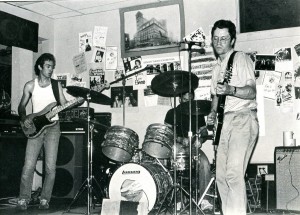
The Fashion Jungle at the Tree Cafe, 1987 or 1988. From left: Steve Chapman, drummer Ken Reynolds, Doug Hubley. Photograph by Jeff Stanton.
There were other things going on. Real life was picking up momentum, as the song goes. Steve was a newlywed with a new house and a new career in food-service administration. Ken was working vampire hours at the post office. My journalistic schedule was as erratic as ever, mixing days, nights and weekends.
In short, other demands were demanding, and — for me, anyway — the success or failure of the Fashion Jungle, while still something to take seriously, was no longer the yardstick to measure my own success or failure.
Hear 1987-88 recordings from the reformed Fashion Jungle.
-
- Blunt Cut (Hubley-Chapman) Steve Chapman and I never sat down to write together as a duo, although we did write collaboratively with Ken Reynolds. Instead, this was a case of fitting my existing lyric — one of the few that use a hairdo as a portent for the demise of an affair — to his excellent existing melody. The words are cryptic, but the images all come from a liaison I had in Austria and Sweden in the mid-1970s. Recorded at Geno’s on July 24, 1987, a stunningly humid day. I don’t know what all the screaming is about toward the end. The fadeout is the intro to “Nothing to Say.” Read Steve’s thoughts about this song.
- Sporting Life (Chapman) An early SC contribution to the FJ repertoire, this fantasy of life in the Jet Set started as a supersonic rock number. With keyboardist Kathren Torraca and saxophonist Jim Sullivan in late 1984, it was a slower, heavier ska number. Our late three-piece arrangement kept the ska bounce, but got faster and faster and bigger and bigger. Recorded at Geno’s, May 29, 1987 — I think this was our debut after Steve returned. Read Steve’s thoughts about this song.
- Veterans’ Club (Hubley) This was one of my first songwriting contributions to the reborn Fashion Jungle. Like “Corner Night,” it’s a musical attempt to find some perspective on the travails of the FJ, six years after the band came into existence. Recorded at Geno’s, May 29, 1987.
- Entertainer (Reynolds-Hubley) Better versions of this striptease serenade appear elsewhere, but this is included because of the change we made to the arrangement. The middle used to be a showcase for a Steve Chapman bass solo, but lacking Kathren Torraca’s keyboard, we now felt the sound was too spare. So we lifted the entire instrumental signature from a different song, “Why This Passion,” and used that for the solo.
- Why This Passion (Hubley) But this is not that original arrangement of the song written for the FJ in 1983, a mopey creation that could barely stand up under the weight of an overwrought arrangement. In 1985, for the Dan Knight FJ, I streamlined and supercharged the setting, with the Velvet Underground in mind. Here, with Steve back on bass, this tale of a lovers’ tiff gets the full-blown late FJ blowtorch treatment.
- Complaint (Chapman-Hubley-Reynolds) A collaborative musical setting for my lyric, which is an elaborate and personalized complaint (hence the title) about overheated land development in Maine in the 1980s. Toward the end of the FJ’s run, as our songwriting slowed down, we increasingly resorted to working out the music for new songs as a group. This is a rough rehearsal recording of one that we never performed — in fact, it’s a composite of two incomplete takes. Chapmans’ basement, 1988.












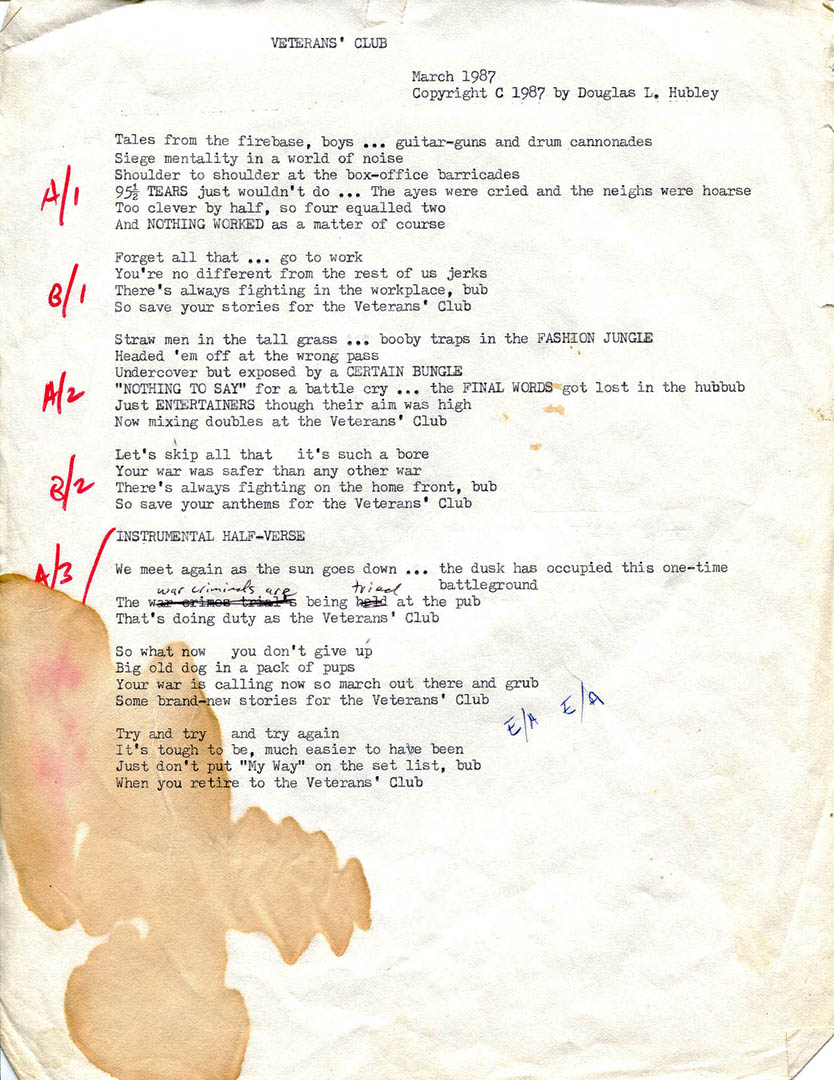
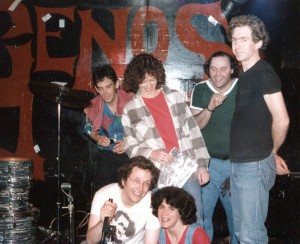
Pingback: » Other Voices: The Fashion Jungle, 40 Years Later Notes From a Basement